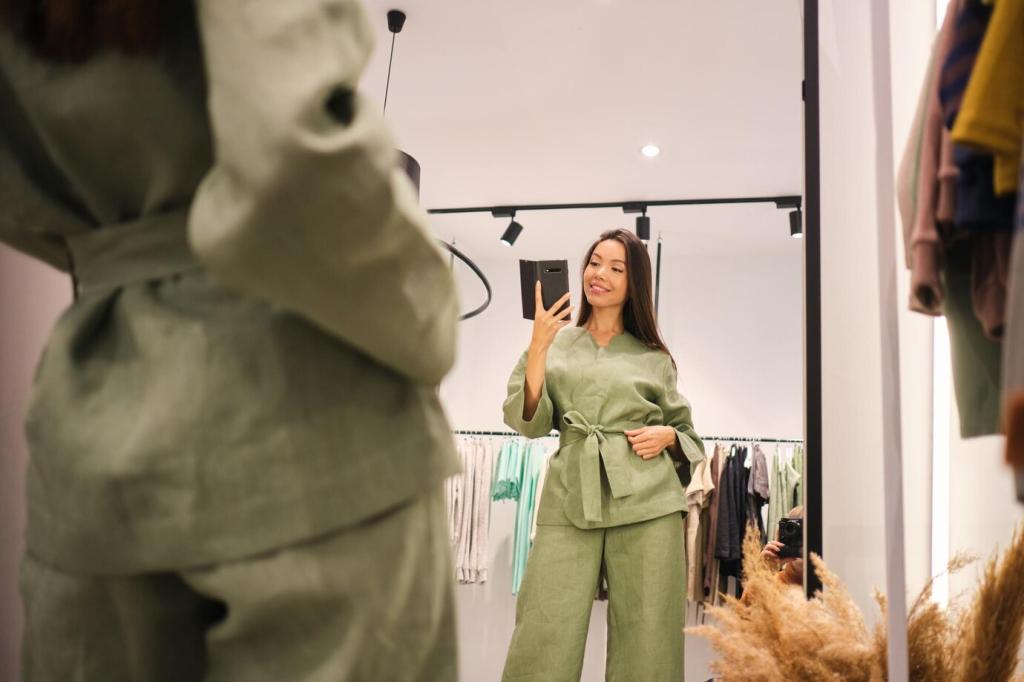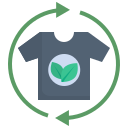Innovative Materials in Sustainable Apparel: The Future You Can Wear
Selected Theme: Innovative Materials in Sustainable Apparel. Explore how science, craft, and nature are reshaping clothing—fiber by fiber. Dive in, comment with your favorite breakthroughs, and subscribe for weekly deep dives, maker stories, and actionable tips.

Bio-based Breakthroughs: Plants, Algae, and Agricultural Residues
Agricultural byproducts spun into durable fabrics
Fibers extracted from pineapple leaves, banana pseudostems, and rice straw become surprisingly strong yarns with earthy textures. A farmer described extra income from crop residues funding soil health improvements, proving materials innovation can sustain both land and livelihoods.
Algae-based foams and pigments with lighter footprints
Microalgae can yield cushioning foams and rich pigments that reduce fossil reliance. A marathoner tested algae-foam insoles during a rainstorm and noticed steady rebound and less odor, then messaged us asking how to compost them when they finally wear out.
Regenerative crops that rebuild soil while clothing us
Hemp and flax thrive with modest inputs, anchor soil, and encourage biodiversity. One cooperative rotated hemp with legumes, reported fewer pests, and produced breathable shirting—inviting readers to consider how their closet might also restore habitats, not just decorate them.
Mycelium mats that mimic hide with minimal inputs
Fungal mycelium grows into dense, felt-like sheets shaped and tanned with gentler chemistries. A designer recalled the first prototype bag creased like real hide, sparking tears of relief after months of trial jars, carbon accounting, and texture tweaking.
Bacterial cellulose: ultralight sheets grown in vats
Microbes spin nanofibers in nutrient baths, forming translucent layers that dry into surprisingly robust films. A student maker stitched a wallet from kombucha-derived cellulose, then documented patina changes weekly, inviting classmates to touch, sniff, and debate durability versus biodegradability.
Plant-based leathers from cactus, apple, and grape skins
Desert plants and fruit industry leftovers are bound into supple sheets. Some products use thin polymer coatings for strength, so check composition labels. Share your wear tests—does the finish crack, soften gracefully, or stay pristine through seasons of everyday use?

This is the heading
Lorem ipsum dolor sit amet, consectetur adipiscing elit. Ut elit tellus, luctus nec ullamcorper mattis, pulvinar dapibus leo.

This is the heading
Lorem ipsum dolor sit amet, consectetur adipiscing elit. Ut elit tellus, luctus nec ullamcorper mattis, pulvinar dapibus leo.
Smart Sustainability: Materials That Measure and Adapt
Durability by design to reduce replacement cycles
Sturdier yarns, tighter weaves, and reinforced stress points stretch garment lifespans significantly. A commuter tracked a jacket’s wear with repair logs, discovering a small bar tack at the pocket saved months of fray, reducing both waste and frustration.
Digital product passports and traceable fibers
Invisible markers, secure QR labels, and batch-level data verify material origin and care instructions. A recycler scanned a worn tee, instantly seeing fiber composition and dye method—information that sped sorting, cut contamination, and improved the quality of resulting yarns.
Thermo-regulating knits that cut energy use
Phase-change microcapsules and engineered knit structures smooth temperature swings, reducing reliance on heating or cooling. A mountaineer logged body temps during a windy ridge walk; the base layer kept comfort steady, delaying the need for extra layers by hours.
Circular Design: Compostable, Repairable, and Returnable
Using a single fiber type for shells, linings, and threads helps future recyclers process garments efficiently. A sorter showed two similar jackets; the mono-material piece finished the line in minutes, while the mixed one stalled everything during trim removal.
